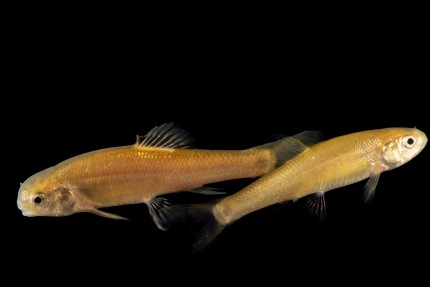Peacock perch - Centrarchus macropterus - 6-8 cm
incl. VAT plus shipping costs
Immediate delivery, express possible ![]()
More than 20 Articles in stock
Delivery only innh. Germany and Austria possible.
Switch to the German store
- Item no: 10335
Fast delivery times
All products are in stock with us!14 years of breeding experience
Let our team of experts advise you!High customer satisfaction
from over 3,000 reviews "With its appearance, the peacock perch immediately catches the eye. Scientifically called Centrarchus macropterus (LACÉPÈDE, 1801) , the biotope fish actually comes from South America and belongs to the sunfishes, the so-called Centrarchidae. Sometimes it is also called "peacock-eyed sunfish". With its great appearance, it is a pretty pond and aquarium inhabitant.
It has the typical perch high back with flattened sides. In the basic color it is greenish to brown, but sometimes also orange. A black conspicuous spot can be found on its gill cover, also there are black-orange edged eye spots on the fin base of its dorsal fin, which gave it its name.
It is said to have a final size of 30 centimeters, which it will probably not reach in the aquarium. This should contain at least 500 liters and can be equipped with a fine sand as a substrate. Wooden roots and stones can be used to create a visual screen and to mark the territory. Basically the pretty perches prefer a very good water hygiene, also in the aquarium the water should therefore be changed regularly and treated well with a filter. The pH value may be between 7 and 7.5, the total hardness between 5-15 °dGH. Occasionally the peacock perch are quite skittish, so the aquarium should be well covered to prevent them from accidentally jumping out. The water temperature should not exceed 28 °C permanently.
At about one year of age, peacock perch are sexually mature and usually herald the spawning season from the end of March, or when the water temperatures reach between 16 and 20 °C. The males dig troughs in the bottom where the female lays her eggs. The male takes over the brood care and fans the clutch to supply it with oxygen. Once the young swim free, he ceases the protective role. Initially, the young fish stay mainly in fine plants or at the edge of the bank and can be fed with dust food, but also with infusoria or nauplii. In the pond, however, they are easy prey for waterfowl, so overpopulation is unlikely.
The carnivorous peacock perch feeds mainly on insects, larvae and leeches in the pond. Therefore it should rather not be socialized with invertebrates. From time to time they also feed on the offspring of other fish. With a flake food for pond fish they can be fed simply and easily, but occasionally they can also be spoiled with live and frozen food, such as we carry in the store.
| Scientific name: | Centrarchus macropterus (LACÉPÈDE, 1801) | |
| German name: | Peacock's eye perch | |
| Difficulty level: | for beginners | |
| Origin/Distribution: | South America | |
| Appearance: | greenish to brown base color with conspicuous black gill patch and eponymous eye spots on the base of the fins, more colorful during mating season, 15-30 cm (aquarium/pond) | |
| Age expectancy | 6 years | |
| Water parameters: | GH 5-15, pH 7-7.5, temperature 4-28° C, optimum 20 °C | |
| Tank size: | 500 liters and up, pond depth from 80-120 cm | |
| Food | Omnivorous, live and frozen food, mosquito larvae, artemia, flake food for pond fish | |
| Breeding | medium | |
| Behavior | territorial at mating time | |
| Group size | from 5 animals | |
| Further information |
- Item no: 10335
Entdecke die Garnelio Welt!
Garnelio gehört zu den größten Onlineshops für wirbellose Aquarientiere weltweit.
Viele Artikel gibt es exklusiv nur bei uns im Shop.




































The fields marked with * are required.
I have taken note of the privacy policy.